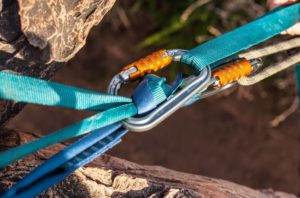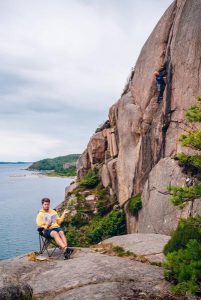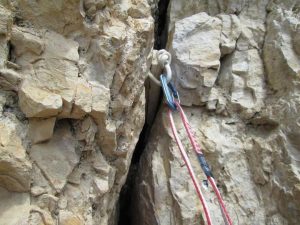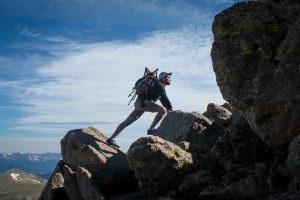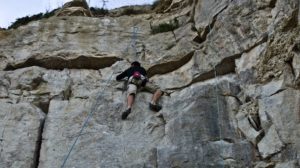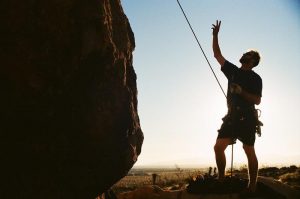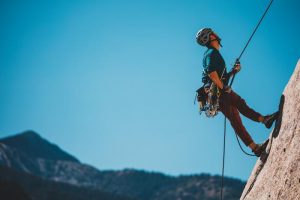Okay, you’ve done some top-rope climbing in the gym and on your buddy’s rope out at Carderock along the Potomac River. You’ve bought the basic top-rope climbing equipment you need to get out on the rocks. Now you want to learn how to safely create your own anchors out at the cliff.
Learn With an Experienced Guide
I recommend, however, that you read the information here and then if possible go out to the cliff with an experienced climber or with a knowledgeable climbing guide and learn how to establish top-rope anchors under their watchful eyes. Creating anchors as an apprentice makes a world of difference and is a heck of a lot easier and safer than by trying to do it by yourself.
Choosing the best site for your top-rope anchor.
Deciding the best site to set up your anchor is crucial. You need to evaluate the cliff and the types of climbing it offers; the experience of the climbers that are with you; and finally the cliff-top where you will establish your top-rope anchor. Also, consider the hazards and risks to reach the cliff-top and try to minimize and mitigate all the risks. One way is to fix a rope and tie into it to avoid falling off the cliff while setting up the anchor. Don’t laugh. It happens and is a leading cause of climbing accidents and injuries.
Where you decide to set up your top-rope anchor is very important and relies on your own evaluation and good judgment about the climbing site. First, evaluate the climbing area. Ask yourself the following questions:
- What kinds of routes does it offer?
- What types of routes do the folks with you want to climb and what is their experience level?
- Do established bolt anchors exist below the cliff-top that you can safely access from above?
- Can you safely create a top-rope anchor on the top of the cliff using both natural and gear anchors?
- What are the hazards and risks involved in getting to the cliff-top and how can you safeguard yourself once you’re up there?
After evaluating the top-rope climbing site, follow 2 basic ways to decide where to build your anchor.
For our climbing gear recommendations, check out these buying guides:
Ropes | Harnesses | Backpacks | Shoes | Helmets
Chalk | Locking Carabiners | Quickdraws | Cams
Lead a Route to Anchors or the Cliff-Top
The first and easiest way is that you or another experienced climber will lead a route from the base of the cliff to a fixed anchor somewhere on the cliff face or on the cliff-top. This anchor is usually two or more bolts that you will then clip quickdraws or slings onto. Then you can equalize the load on the bolts with the slings and put your rope through a couple locking carabiners at the master point.
Scramble to the Top—But be Careful!
The second and most dangerous way is that you will scramble up an easy way to the cliff-top and then decide the best place to build your top-rope anchor. Be extremely careful on the cliff-top. Climbers die every year by either climbing unroped up an easy route to the cliff-top and falling to the ground, or by scrambling around unroped on top of the cliff and falling off by tripping over boulders or losing their footing. To be safe, anchor your rope to a stout tree or another type of anchor and tie yourself into it before setting up your top-rope anchor at the cliff edge. Your safety is your responsibility. Climb smart.
Building a safe and redundant anchor using bolts, gear, trees, and boulders.
Once you’ve evaluated the site, build your anchor using both primary and secondary anchors. Then equalize them all above the master point, the point where the rope is attached to the anchor system, to distribute the load or weight of a falling climber over the entire system. Remember that all anchors must be bombproof, backed up, and equalized.
Evaluating the safety of your anchor by using SECURE and then making necessary safety corrections.
SECURE is an acronym used to evaluate the strength and reliability of your anchor. SECURE means Strong, Extended, Centered, Unbroken, Run, Edge. If the anchor meets all these criteria, it’s safe and ready to rock and roll.



